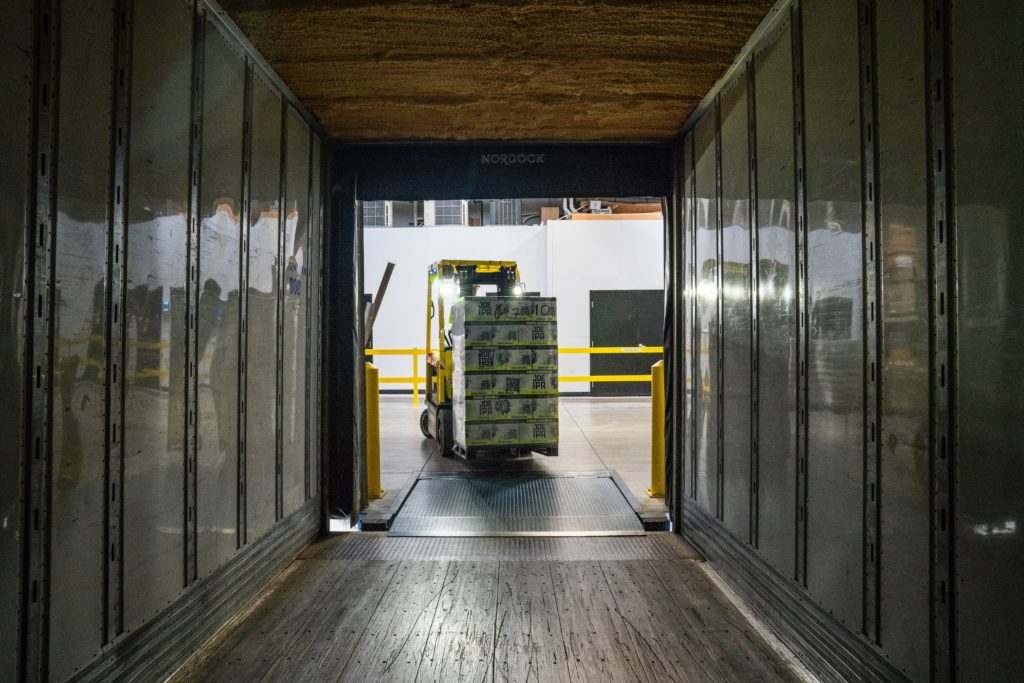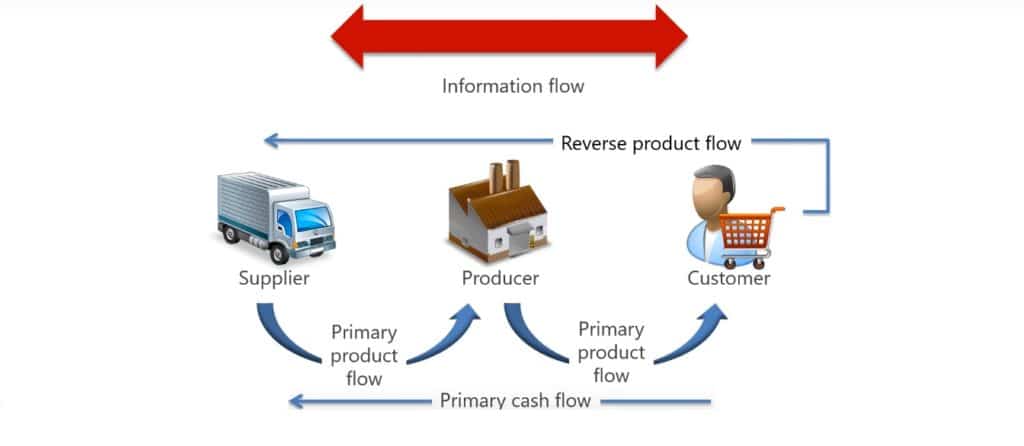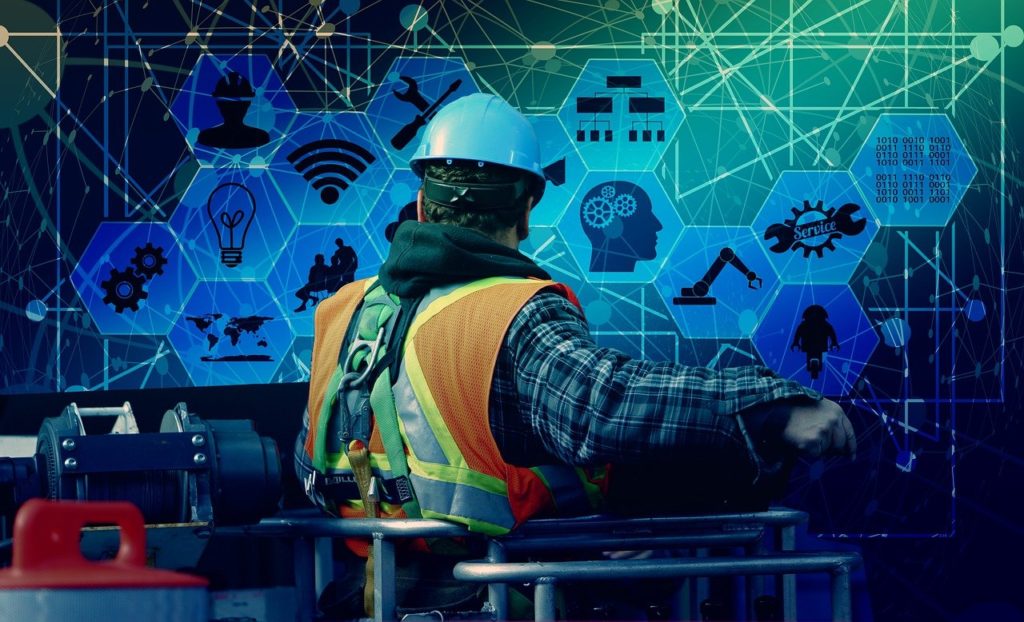The Supply Chain: an essential process in our society.

“Supply Chains are in competition,
not companies” Martin Christopher.
At the heart of our activity, the supply chain is an essential process in order for our society and our consumption to function well. It is an international network, used to deliver goods and services to consumers. From raw materials to final products in the client’s hands, it constitutes a chain of process and actors that are synchronized.
In recent decades our economy’s globalization has led to a strong multiplication and increase of exchanges. The continuous improvement of our technologies always enables faster delivery time, which creates the need of logistics and supply chains more and more efficient and competitive. If we take two companies that sell the same product, the one with the most efficient supply chain and which guarantees the fastest and most qualitative delivery will always be the one that the client will opt for.
The supply chain’s challenge is to make products accessible at the right time, the right place and especially at the right price. The fulfilment of the customer promise is crucial.
The supply chains are characterized by a set of flows, at first, we have physical flows, that is to say the move, the transport and the storage of materials and products. Products and materials are transported from production sites, then go through the hands of carriers in order to either be moved in warehouses to be stored or inside factories to be manufactured or transformed.
A real chain of actors, composed of a variety of links that communicate with each other.
Then these transformed products can be delivered to suppliers or wholesalers, who deliver them to sellers that trade to consumers in exchange of money. Lastly, the product can be returned by the user in case of dysfunction for instance.

The supply chain also integrates financial flows, cash flows that reward the different actors.
Theses flows move in the opposite way of the physical flows and include the different transactions realized by all the carriers and companies of the network.
They include the billings, the receipts and other types of payments.
Naturally, the supply chain can not work without an efficient flow of information between the different actors. These data include products catalogs, prices, the transactions history, the volumes handled, but also the suppliers’ list or any other type of database.
The treatment and analysis of the latter thanks to KPIs (Key performance indicators) is leading in a strategy of supplying and in its efficiency.
Logistic and supply chain management, what are the differences?
Two terms not to be confused with. Indeed, the logistic is an integral part of the supply chain management and is one of the branches.
Of military origin, the term “logistic” is an ancient term which by definition is described as activities of transport, travel, storage and packaging of a company or an organization.
All these activities are essential for the proper internal and external functioning of the company.
While the primary objective of the supply chain is the competitive advantage via the optimization of different processes, the logistic on the other hand has the purpose to answer the customers’ requirements.
Forecasting, pillar of the supply chain’s performance.
The worst-case scenario for a retailer: to be out of stock and not being able to answer the demand.
This is the main challenge for the supply chain professionals, to manage the stock, the demand and realize the order forecasting in order to be able to anticipate.

It is the predictive analysis of data that will allow to have efficient supply chain. Indeed, supply chains have to find the balance between client satisfaction and economic profitability, to avoid overstock, but also stock shortage.
This capacity of analysis and forecasting enables a very good understanding of its field of activity, and of the market and clients’ behaviors.
A good forecasting ensures a decrease of the costs especially when a contract of resupplying is signed with the suppliers, knowing that the price changes regarding the quantity ordered.
Tools and machines at the service of humanity: supply chain’s solutions.

The major technological advances in terms of automation and artificial intelligence, have allowed supply chain professionals to adopt IT solutions that are powerful and reachable in terms of use.
The supply chain sees further and further.
The dream of every supply chain professional would be to predict the future.
The idea of short-term, mid-term and long-term visibility seems essential on volumes that are handled to be able to satisfy the client. Trade flows and exchanges are more and more consequent and reach a rhythm that demonstrates that manual and human work alone can no longer answer the consumers’ needs.
Supply Chain actors have therefore been able to use tools and develop solutions, software and machines that are able to facilitate, reduce, or automate the daily tasks that are tedious, both physically and mentally.
Where robots and drones will perform tasks such as order picking and transit, powerful software solutions coupled with artificial intelligence and machine learning algorithms allow professionals to establish precise forecasting of the demand, and thus optimize their supply chain.
It is precisely what Vekia proposes in its solution.
Towards a more responsible supply chain.
The supply chain represents a consequent economic market, in proportional growth with the globalization of our society and the multiplication of trade flows.
Social, societal and environmental problematics are now at the heart of large companies’ strategies, the social responsibility of these companies (CSR) is frequently linked to their supply chain.
The choice of suppliers and partners, the reduction of energetic and greenhouse gas emissions’ costs, the respect of laws and work values are parts of practices put in place by the organizations.
Supply Chain solutions are there to help humans in this transition, and then share their capacities and technologies for the benefit of a better world, for humans and the planet.
